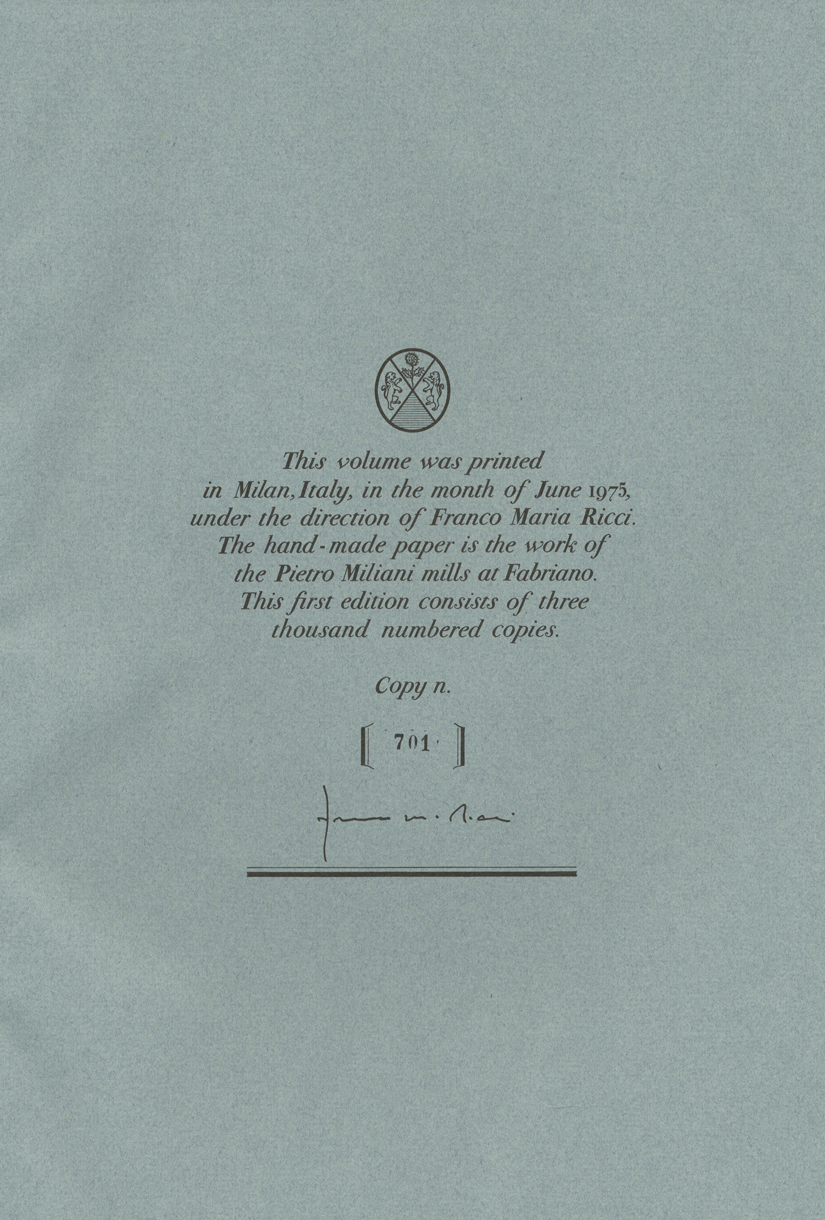Franco Maria Ricci
Franco Maria Ricci
Tarots: The Visconti Pack in Bergamo and New York - 1975
Tarots: the Visconti pack in Bergamo and New York. A critical examination by Sergio Samek Ludovici; text by Italo Calvino, translation by William Weaver. (Parma: Franco Maria Ricci, 1975). This work was originally published in Italian as Castello dei destini incrociati. It reproduces the surviving cards from a Tarot pack that was created in Italy in the fifteenth century for the Visconti family. Signed by publisher Franco Maria Ricci, limited edition #701/3000. A deluxe edition, bound in black silk with gilt titles, printed on hand-made Fabriano papers. Tarot illustrations laid down on the top board; all housed in a slipcase. The present copy is in beautiful very fine condition, without marks or rubbing.
From the esteemed Italian publisher Franco Maria Ricci—who brought us Luigi Serafini’s famed and mysterious Codex Seraphinianus in 1981—comes a remarkably beautiful discourse on the oldest Tarot card deck known: the 15th-century Visconti-Sforza.
The Visconti-Sforza tarot deck had a significant impact on the visual composition, card numbering and interpretation of modern decks. The surviving cards are of particular historical interest because of the beauty and detail of the design, which was often executed in precious materials and often reproduce members of the Sforza and Visconti families in period garments and settings. Consequently, the cards also offer a glimpse of nobiliar life in Milan, which the two families called home since the 13th century. When commissioned by Filippo Maria Visconti, Duke of Milan, and by his successor Francesco Sforza, the cards were still known as Trionfi (“triumphs”, i.e. trump) cards, and used for everyday playing.
The text surrounding the faithful reproductions of the original cards is, in effect, a short novel by Italo Calvino, commissioned by renowned Italian publisher Franco Maria Ricci for this edition: it concerns a group of travelers who are struck dumb and can communicate their stories only through Tarot cards, recounted and described by a narrator. (Calvino went on later to “complete” the story in a second part, built around another deck of Tarot, published in 1973.)
The remaining original cards of the deck are dispersed today: a number of the cards are in the Pierpont Morgan Library, another group at the Accademia Carrara in Bergamo, and others in a private collection, so Ricci’s book is the only place where all existing cards are brought together.



